Through a combination of robotics and artificial intelligence (AI), a large number of jobs may soon go away. A recent McKinsey report states that automation could make up to 45 percent of all jobs in the United States obsolete, potentially affecting $2 trillion in annual wages. Autonomous trucking alone has the potential to automate away 3.5 million driver jobs.
Augmented reality (AR), however, may become the tool that delays this fate by evolving the role of workers in a post-automation world, creating opportunities for continued employment across a more diverse set of occupations. In a scenario where training or technical schools may take too long or may be economically unfeasible in order to change careers as a result of displaced work, AR can enable people to perform unfamiliar and complex tasks. At scale, this can take a displaced workforce and immediately put people back to work performing jobs guided by AR.
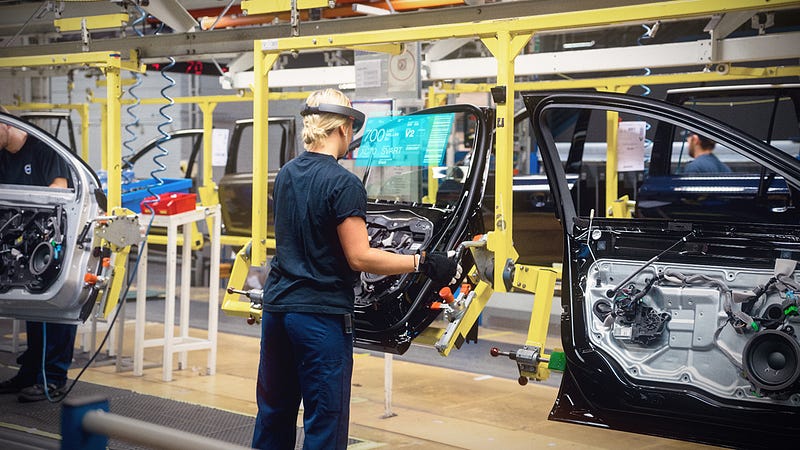
There are already AR applications that allow users wearing an AR headset like the Microsoft HoloLens or holding a tablet computer to see technical information and instructions overlaid on the real world. This information takes the form of a wrench or a hand instructing a user to perform a physical action, such as loosening a bolt with a wrench or removing a part. Through sophisticated computer vision software, these virtual objects would appear directly on the real object in the physical world.
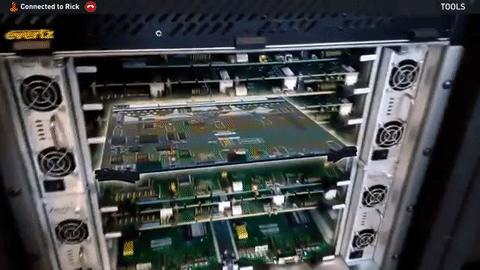
A worker in the future may put on their AR headset and, just like a ride-sharing driver, start receiving job requests to physically perform technical operations. For example, the user may be instructed to change the fluid of a car engine. A digital wrench would appear over the cap they needed to loosen, an oil-can may appear instructing them to fill the tank, and so on until they had completed the task at hand. In this scenario, a worker would not need to fully understand the technicalities of the operation they are performing. The computer provides the knowledge in real-time and in their field-of-vision, so that their hands are freed up to actually do the work.
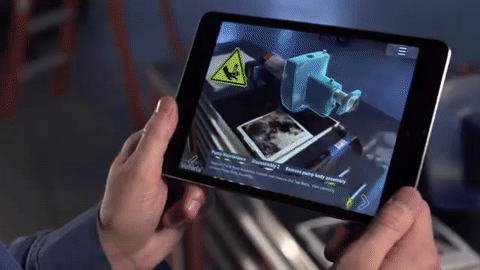
Additionally, this just-in-time knowledge benefits workers by letting them jump between different fields in order to increase their chances for employment. Perhaps one day they are repairing a car and the next they are acting as a plumber. With this new technology, someone can learn practical skills on the job while being paid to perform them, versus having to spend time away from earning an income to learn technical skills at a continuing education school which may not even have any practical application by the time they graduate.
Finally, AR has many benefits for experienced workers. AR augments the ability of veteran workers by helping them complete jobs more quickly or taking on more complex tasks, potentially increasing their earnings per day. AR also enables experts to stay in the workforce longer as well. AR can leverage veterans and domain experts within an organization by connecting them with on-site personnel that act as their hands in the field. Applications already exist that make it easy for remote knowledge workers to draw and instruct within an on-site technician’s field-of-vision.
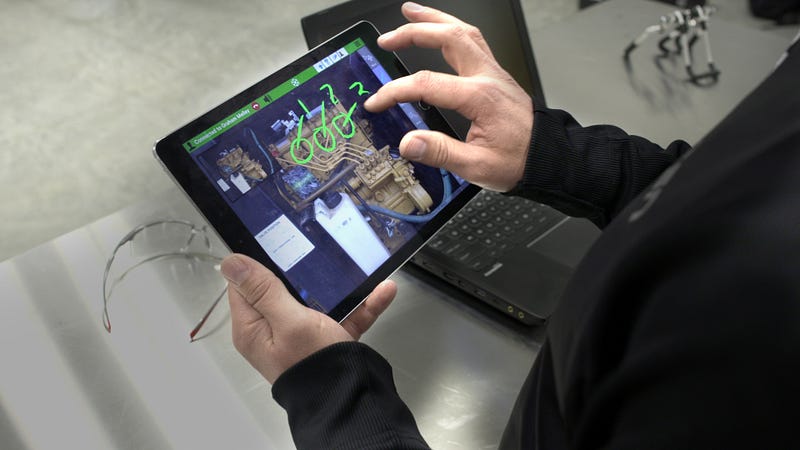
This technology already exists and is deployed in real-world scenarios today. Companies like Scope AR — who are working with companies like Lockheed Martin, Toyota, and Proctor & Gamble to provide augmented reality maintenance solutions for their workforce and customers — and Daqri — who are developing a combined hardware and software solution to make deployment simpler for industrial firms — are focused on building platforms that make it easy for companies to convert the 2D paper schematics and manuals they already provide their technicians to interactive 3D AR “instructables” that can guide an untrained user to perform a highly technical task.
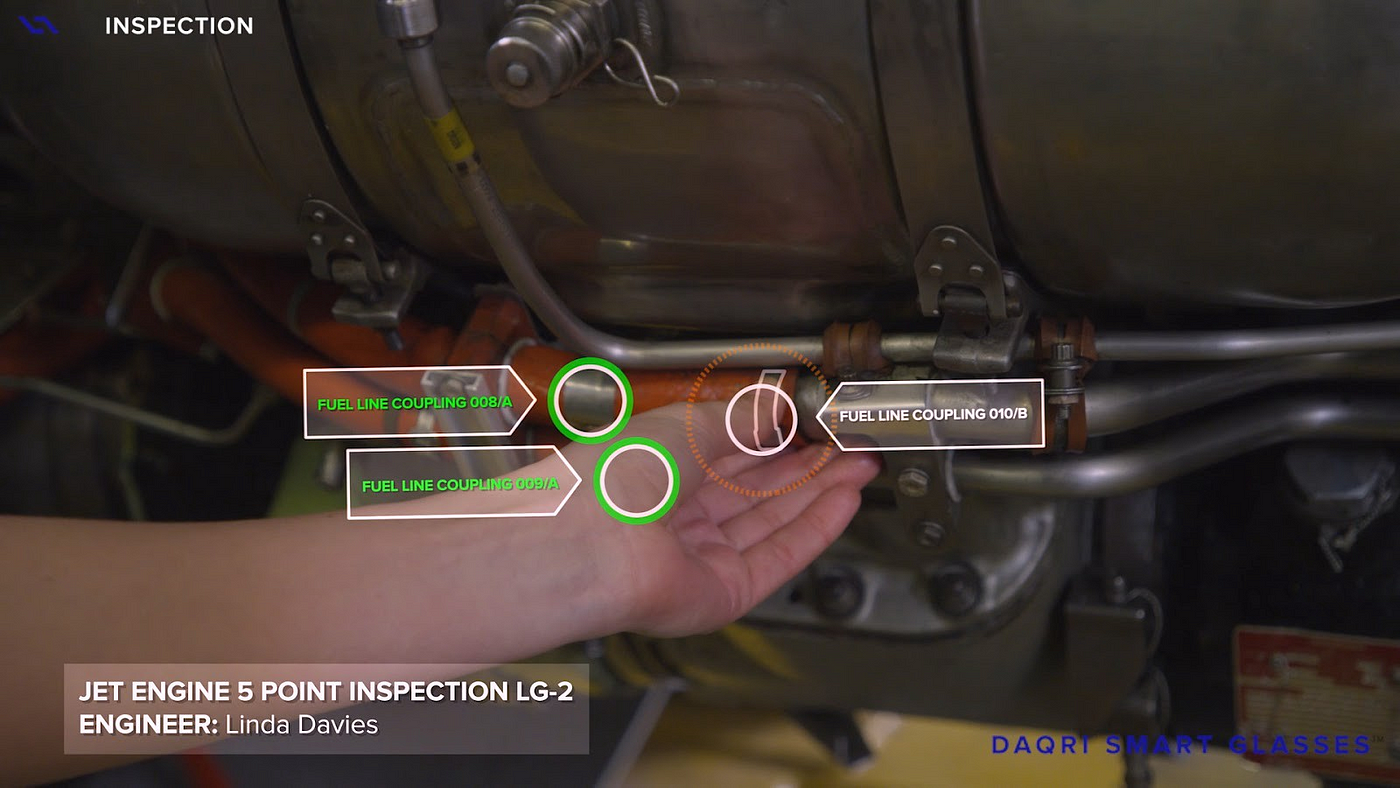
With all of the technological advancements out there, you may be wondering why AR in particular is such a big deal and should arguably be receiving more attention that it currently is in terms of workforce applications. I’d say that the main shift is that knowledge is no longer a limiting factor in being able to perform a job.
Knowledge may now come from a pre-created instruction module, artificial intelligence, or another, more experienced, colleague. As a result, the onsite worker becomes a way of applying that digital knowledge to the real world, acting as a physical pair of hands to digital instructions.
Without AR
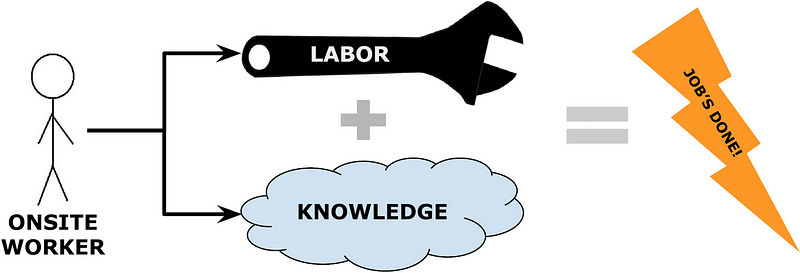
With AR
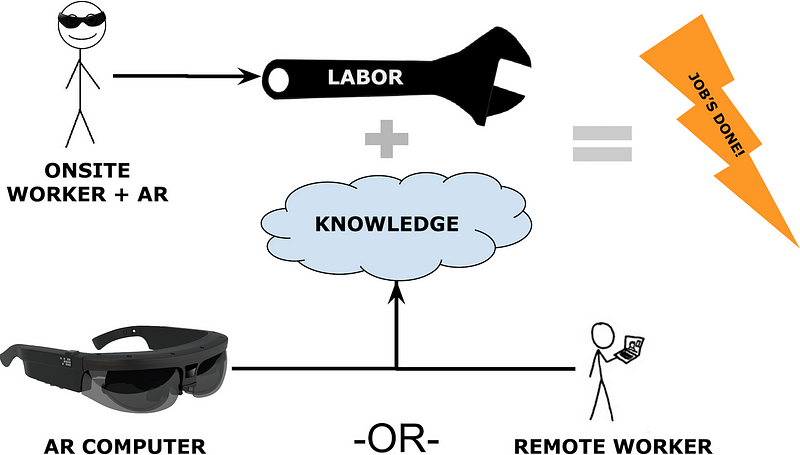
AR knowledge also has the ability to adapt immediately whereas traditional training does not. For example, if there is a shift in the market from gasoline-based automobiles to electric vehicles, existing mechanics would be able to adapt their physical skillset to a new type of vehicle on the job. In traditional schooling, a new set of course materials and curriculum would need to be developed. Teachers would also need to be trained to properly educate students. AR sidesteps all of these issues and provides a worker with the latest information on a task.
While AR isn’t a permanent solution to unemployment, it is one that could ease the transition of displaced workers. It’s true that, in the long-run, even these sorts of jobs may be automated by specialized robots. That level of automation, however, could be decades away or may never become economically viable. In the meantime, augmented reality can provide a way for the human worker to continue to be productive and a value to society.


























